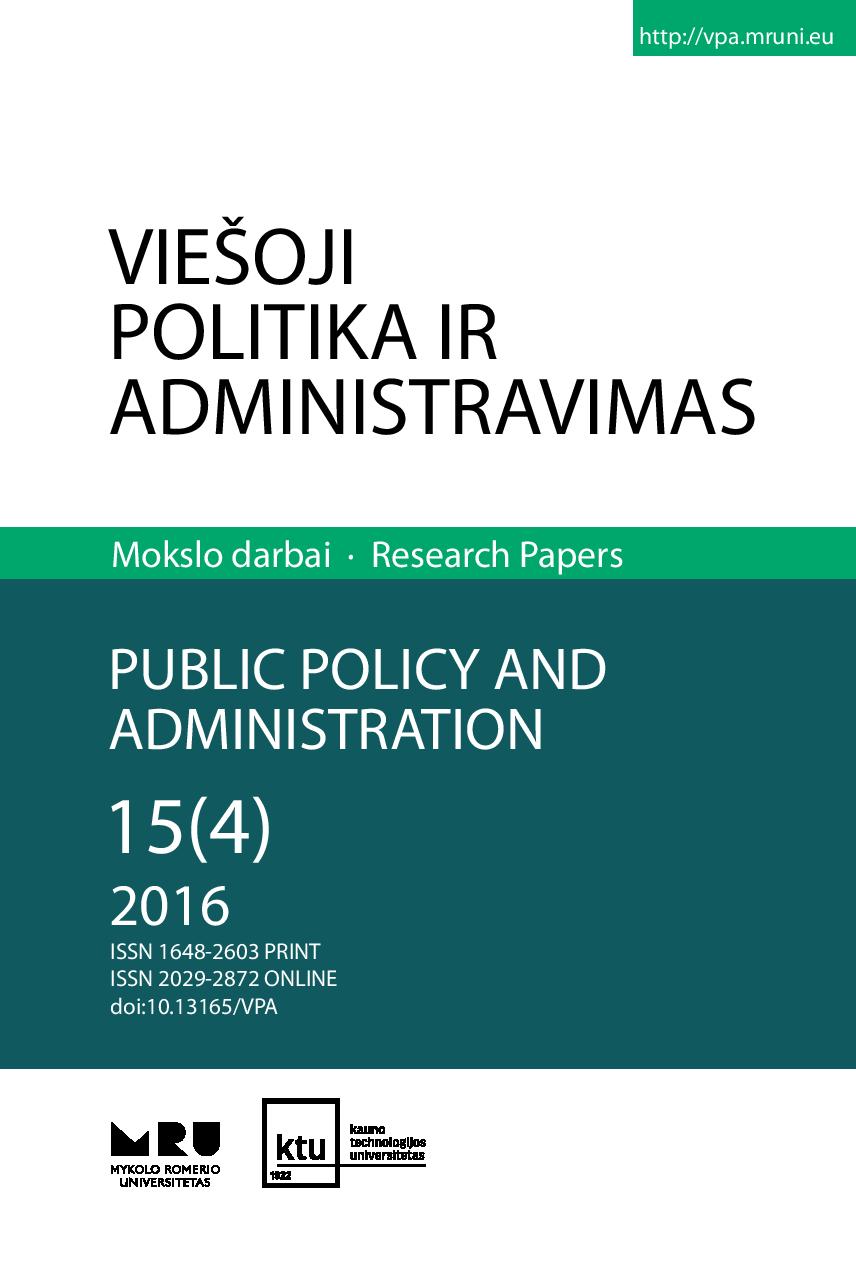Metavaldymo samprata ir struktūra
The Essence and Structure of Metagovernance
Author(s): Alvydas RaipaSubject(s): Governance, Public Administration, History and theory of political science
Published by: Mykolas Romeris University
Keywords: metagovernance; hierarchical governance; market governance; network governance, new public management; new public governance;
Summary/Abstract: Over the last decades of the 20th and the start of the 21st century, the main features of changes in public administration have involved the evolution of traditional forms of such administration into postmodern public governance systems. This paper examines the evolution of public governance theory and practice. The underlying research question is: what is metagovernance and what structure does it take (in terms of the governance of governance)? To answer this, the article uses meta-analysis, theoretical modelling, comparative analysis, and interpretative and prognostic methods as a basis to evaluate many definitions of new public governance. The description of the development of metagovernance connects and combines the line of new forms and doctrines of public governance as good, smart governance, post new public management and new public services. All these theoretical definitions and models of new forms of transformation of governance can be characterised as forms, subsystems or elements of basic metagovernance systems. The term “metagovernance” encompasses the complexity of modern governance and suggests including hierarchies, market and network forms of governance. Metagovernance can be defined as a mutual, hybrid form of three ideal types of governance in the 21st century. The concept combines the best features of theory and governance practice from traditional public administration, new public management and postmodern forms of new public governance.
Journal: Viešoji politika ir administravimas
- Issue Year: 15/2016
- Issue No: 4
- Page Range: 523-537
- Page Count: 15
- Language: Lithuanian

